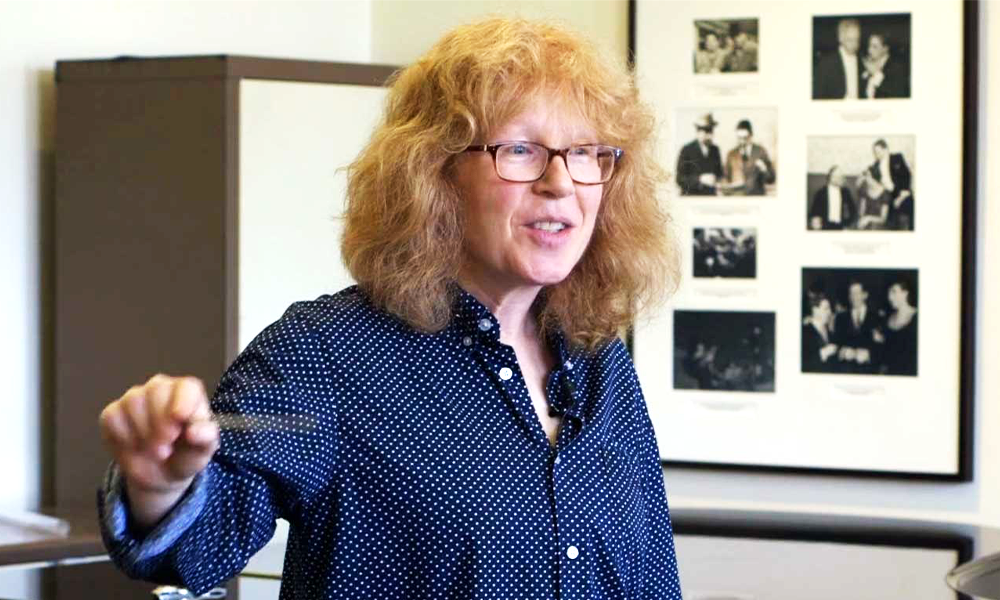As Orchestras for All launches its spring season with a vibrant new visual identity, young musicians highlight why breaking down barriers to music making is more important than ever.
Earlier today, special guests and a team of young musicians joined Orchestras for All on Zoom for a moment of musical solidarity as we celebrate the launch of our ambitious five-year strategy.
To mark the occasion, we’re proud to unveil a bold new visual identity – designed in collaboration with our recently recruited youth board.
Although we’re proud of what we’ve achieved so far – all made possible by the ongoing support of our loyal partners and donors – we understand that there is still much work to be done and especially now during the coronavirus pandemic.
Following 10 years of breaking down barriers, we share a renewed vision: a country where all young people aged 11-19 can access the joy and benefits of playing music with others, regardless of the daily challenges they may face.
Read more: 17 things you’ll only understand if you’ve played in a youth orchestra >
Pictured (left to right): National Orchestra for All ambassador Kate (trombone), current NOFA member Haseeb (trombone) and Orchestras for All Trustee, Joelle (cello).
With our exciting line-up of inclusive music making opportunities, we’re ready to redefine what an orchestra is, who it is for and the positive impact it can have, while also empowering young people and energising music educators to lead change in their schools or local communities.
As part of this, Orchestras for All’s new programme includes a special season of work for National Orchestra for All (the UK’s only completely inclusive national youth orchestra), titled ‘The Way We See It’ – a musical portrayal of equality, diversity and inclusion and with youth voice at its core.
Read more on National Orchestra for All >
For a worrying 98 per cent of National Orchestra for All (NOFA) members, cultural barriers and limited access to music making have prevented them from doing what they love the most.
Urging others to support orchestral music making (see video above), NOFA clarinetist, Joe, said: “Coming from a working class background, classical music seemed so inaccessible. It just seemed like something for the rich and wealthy. You could learn but weren’t given the opportunity to unless you had the money.”
National Orchestra for All members, tutors and ambassadors team up online for the first day of the NOFA course – complete with an epic array of musical instruments.
Many of our young musicians also face health barriers, with 55 per cent previously unable to play in an orchestra due to autism, a physical disability, learning difficulty, or social, emotional or behavioural difficulties.
But when young musicians join the National Orchestra for All, they leave their worries and responsibilities at the door. Violinist, NOFA ambassador and young carer, Isaac, said: “Being a NOFA member gave me some of the most rewarding experiences of my life. You play great music, you meet amazing people – and there’s a tonne of support, so that any problems that you have can be dealt with.”
Current NOFA member and viola player, Hannah, added: “It means a lot to me because I was able to gain my confidence and speak to new people. It encouraged me to share my ideas.”
And despite only 1.6 per cent of Black, Asian and ethnically diverse musicians being members of British orchestras, NOFA is now the most diverse orchestra in the UK with 37 per cent of players coming from underrepresented groups and 54 per cent also based in the lowest 3 IDACI multiple deprivation deciles.
Through a combination of our three core programmes – NOFA, Modulo (supporting teachers and schools to develop an ensemble) and Music Leadership Training (boosting the skills of music leaders and educators) – Orchestras for All is fully committed to enacting positive change over the next five years.
Thanks to our Modulo Programme, we’re pleased to share that 710 young people will have the opportunity to perform in their school in 2021 as well as attending regional and national activities, with 47 secondary schools taking part nationwide.
While the effects of the coronavirus pandemic may be ongoing, we can’t – and won’t – let that be another barrier to music making.
Please join Orchestras for All’s movement today and support our young musicians >
































